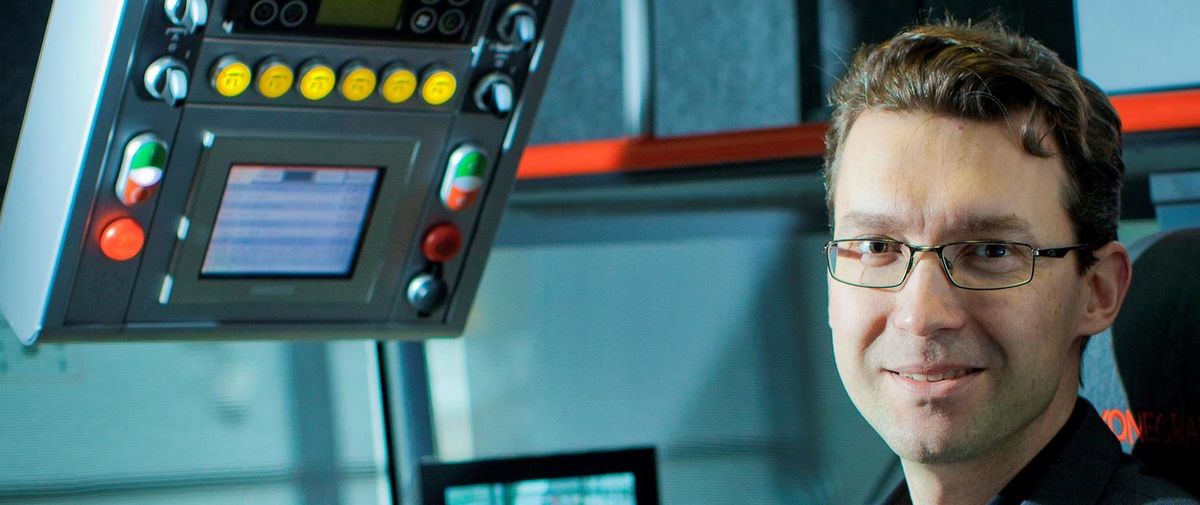For Industrial Design Manager Johannes Tarkiainen, augmented reality (AR) and virtual reality (VR) show immense promise, particularly in their potential to elevate the user experience. Tarkiainen’s innovative projects with Konecranes have been recognized for the quality of their design, garnering the renowned Red Dot Award, for example.
What’s the difference between AR and VR?
The main difference is in the user’s feeling of presence. AR augments or overlays digital content onto the live, real-world scene. In contrast, VR is an immersive, realistic simulation where what you see, hear, and even feel is very different from the actual world around you, making your perception of the real world fade out.
How relevant are these technologies for Konecranes, and how is the company approaching them?
AR and VR have the potential to make an immense impact on how people work and interact in the future. It’s likely that the digital content that is now available through smart phones, for example in field service operations, may soon be used in industrial settings through wearable, hands-free devices like smart glasses.
It’s truly exciting to consider the effect that new and futuristic concepts and technologies like these will have on lifting industry use cases. The focus of AR and VR concepts at the moment is on the digital content as well as on the user’s experience of it, the way a person feels about using the technology or handling maintenance tasks or sharing information with it.
Today at Konecranes, we are able to create advanced product experiences by means of AR and VR. We have many examples of these, including our remote operating station and the jib crane augmentation in customer facilities.
Contextual, real-time and visual information can improve productivity in manufacturing processes.
What is the potential of AR and VR for Konecranes’ business?
We’re living in the era of digitalization, so these technologies are really interesting for Konecranes’ operations. They can potentially transform the way we operate, communicate and learn. Virtual learning or training is another highly interesting area where we can apply AR
and VR technologies.
Where does VR and AR fit into the design process and user experience?
VR typically fits in the early design phase, when the design alternatives are being reviewed. It’s a means for obtaining a first taste of the design of a new product – virtually. Imagine if you could share experiences of something new virtually, in the months or even years before an actual, live version of it exists? Users’ experience of VR is currently on the level that it is generating good results and encouraging users to use it even more.
In what ways would mixed reality (MR) be relevant within a manufacturing context?
Mixed reality is a relevant technology in modern manufacturing environments, thanks to MR’s realistic character. In MR, virtual objects augment the real world and coexist with physical objects. There can be plenty of useful information available for the users in the manufacturing context. Contextual, real-time and visual information can improve productivity in manufacturing processes. For example, finding and adopting instructions or recognizing the correct parts can be a time-consuming and tedious task. This is just one example in which MR can make a real, positive difference in a more traditional process.
Text: Gino de la Paz
Photo: Tomi Parkkonen
